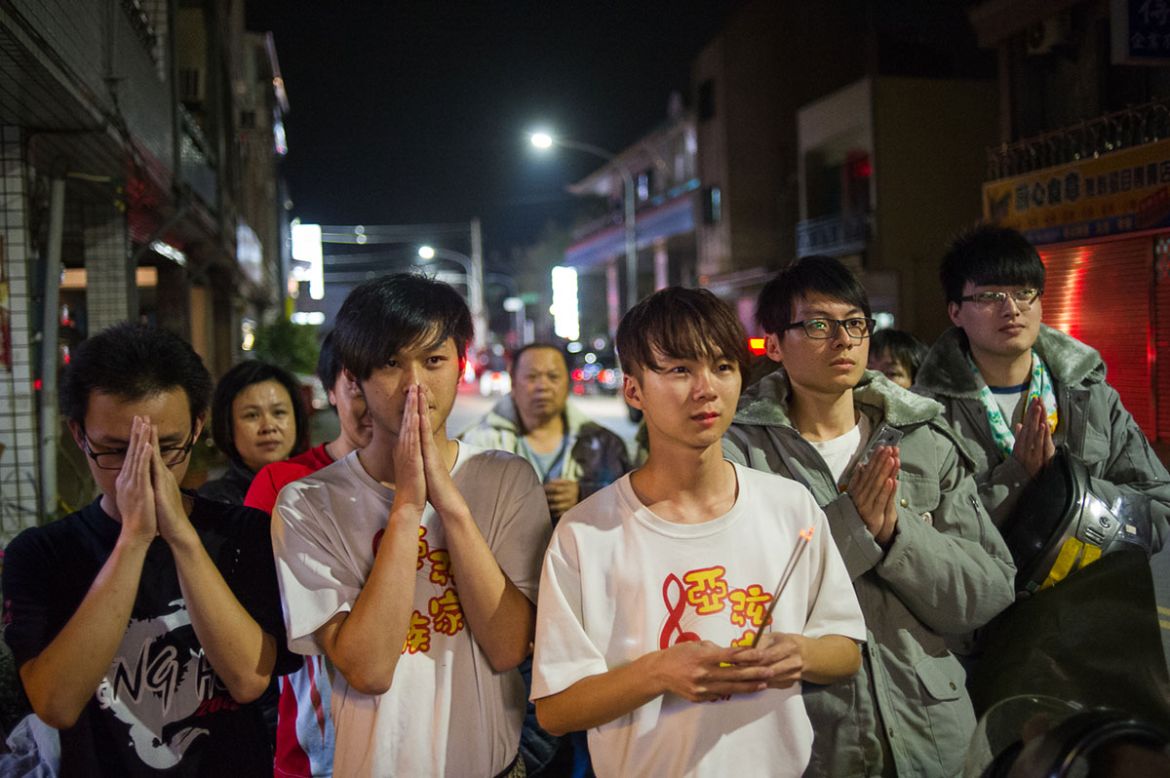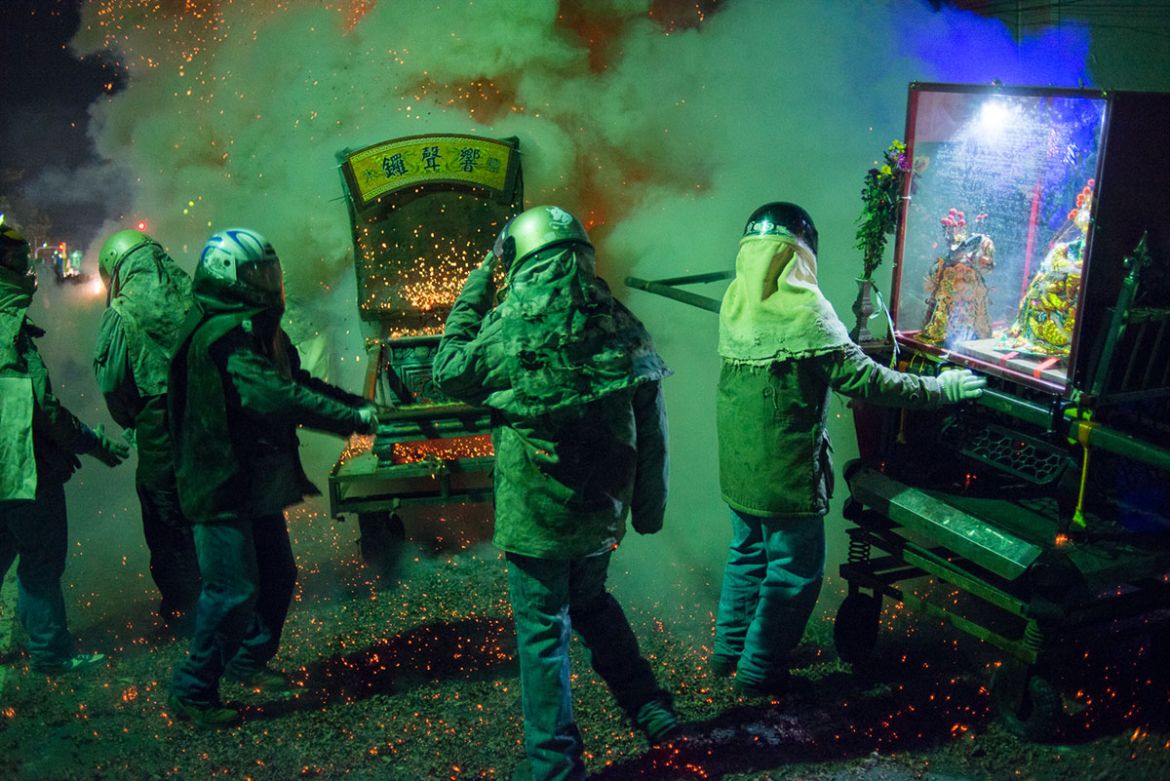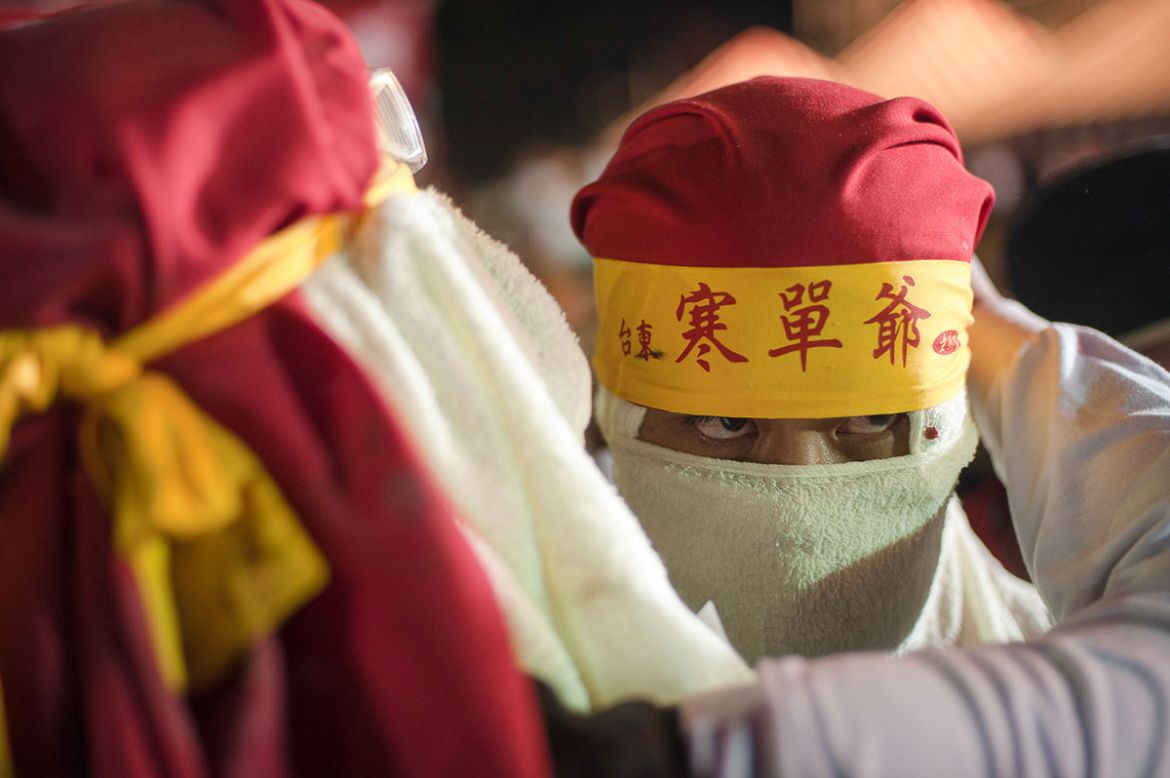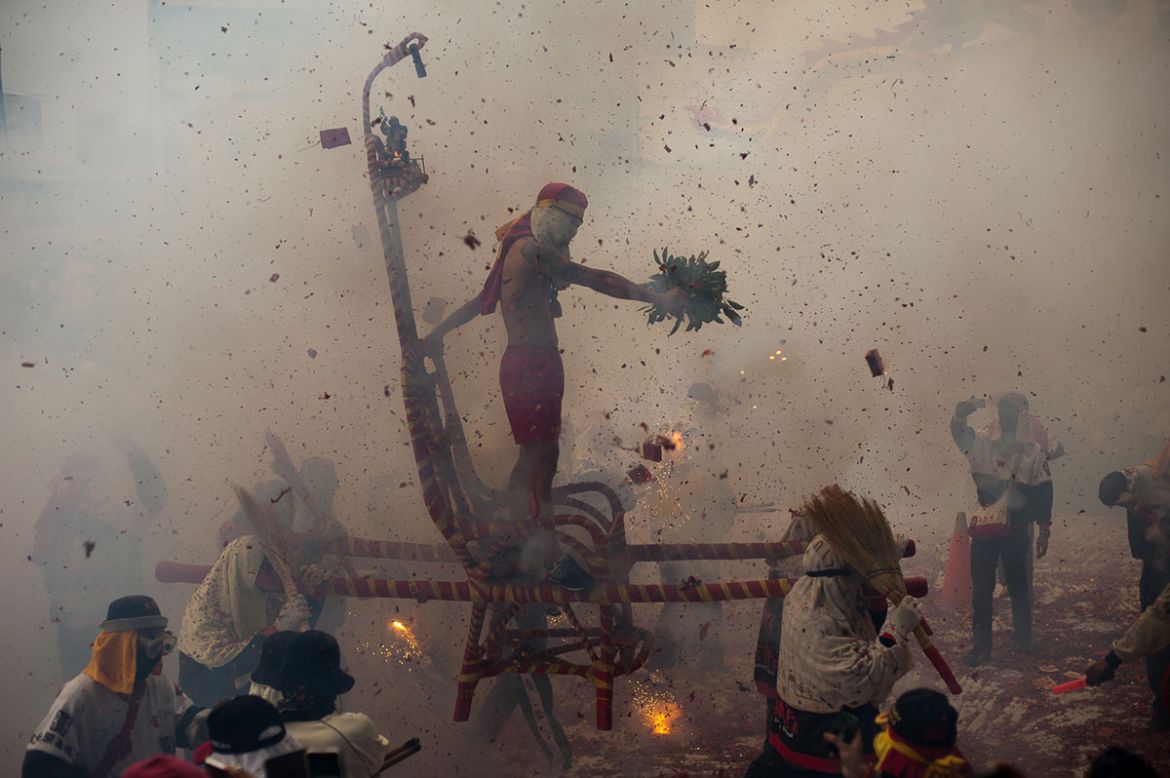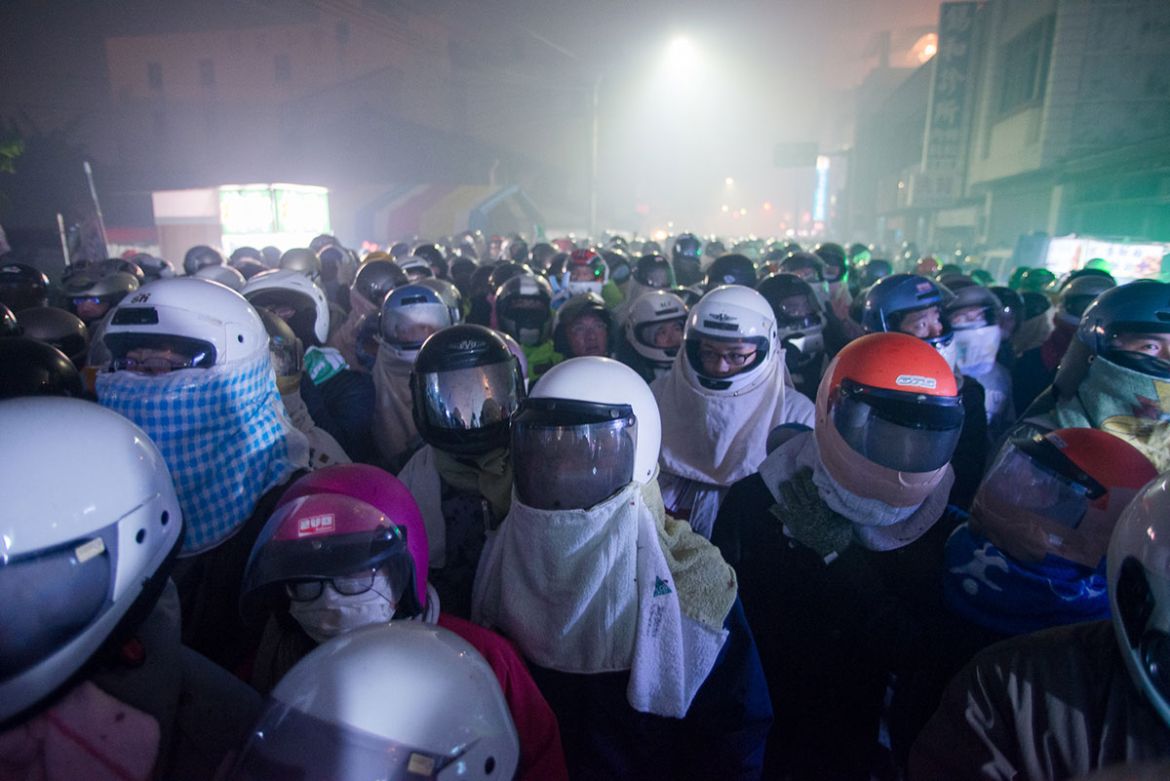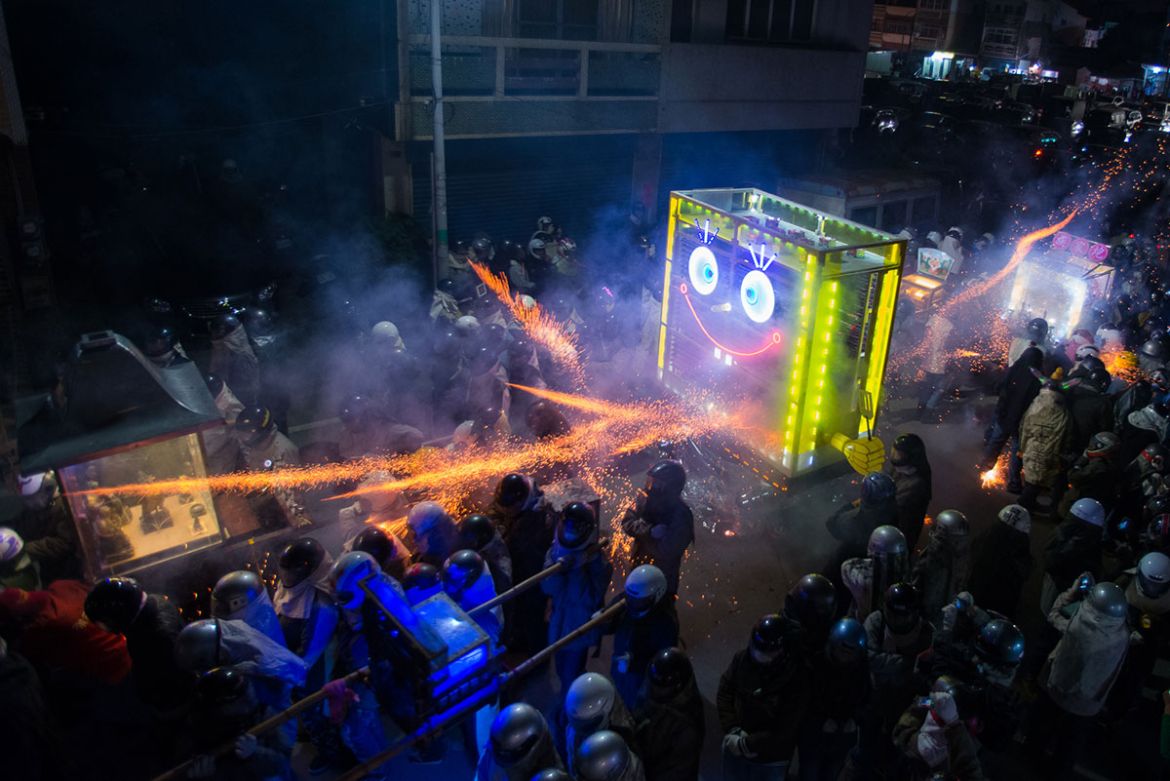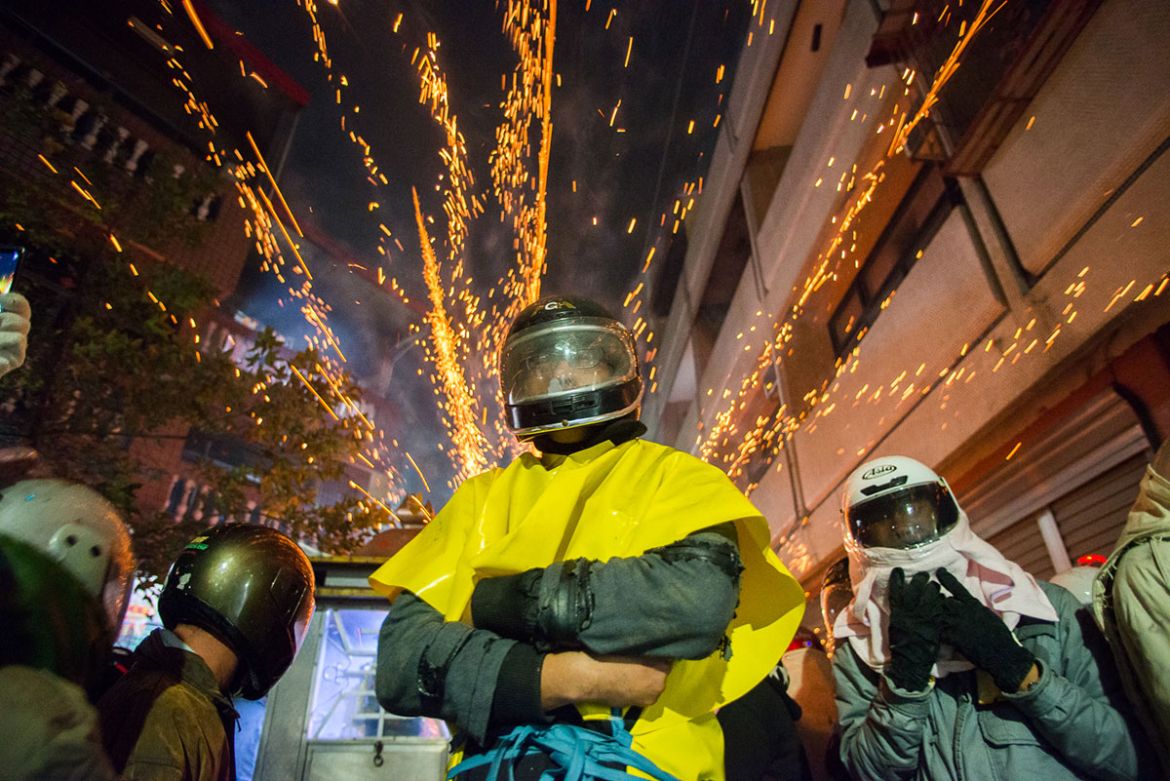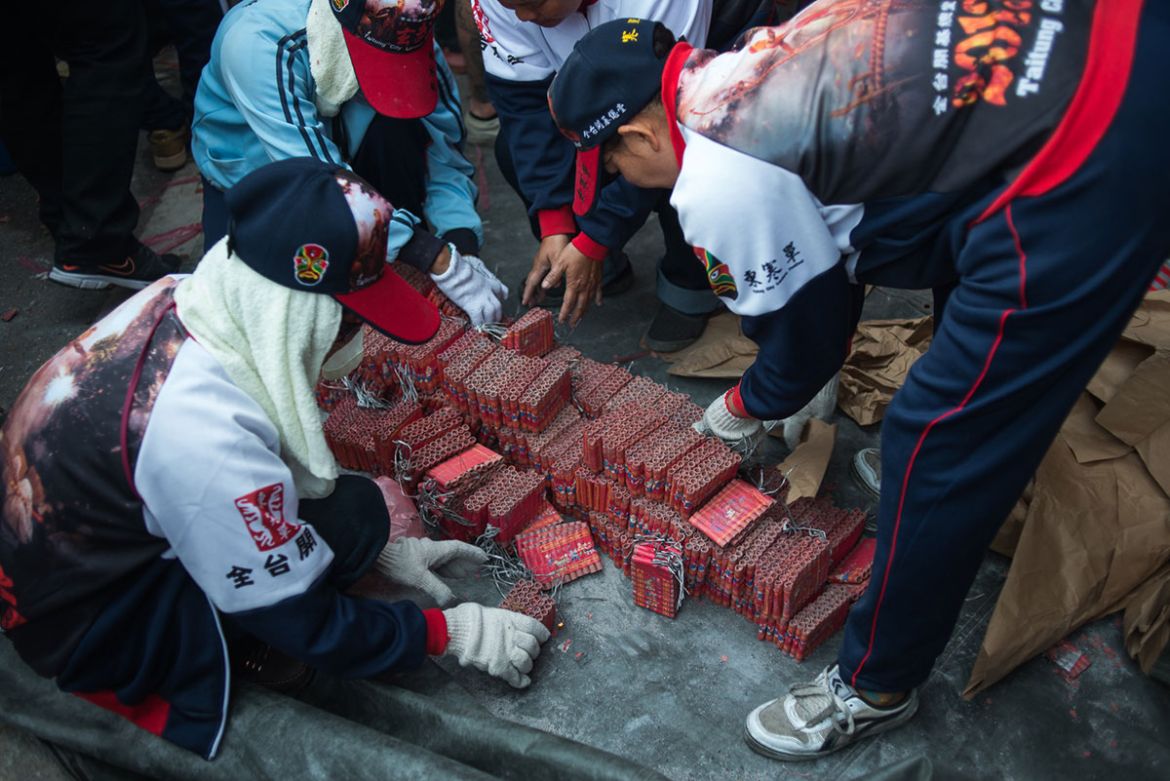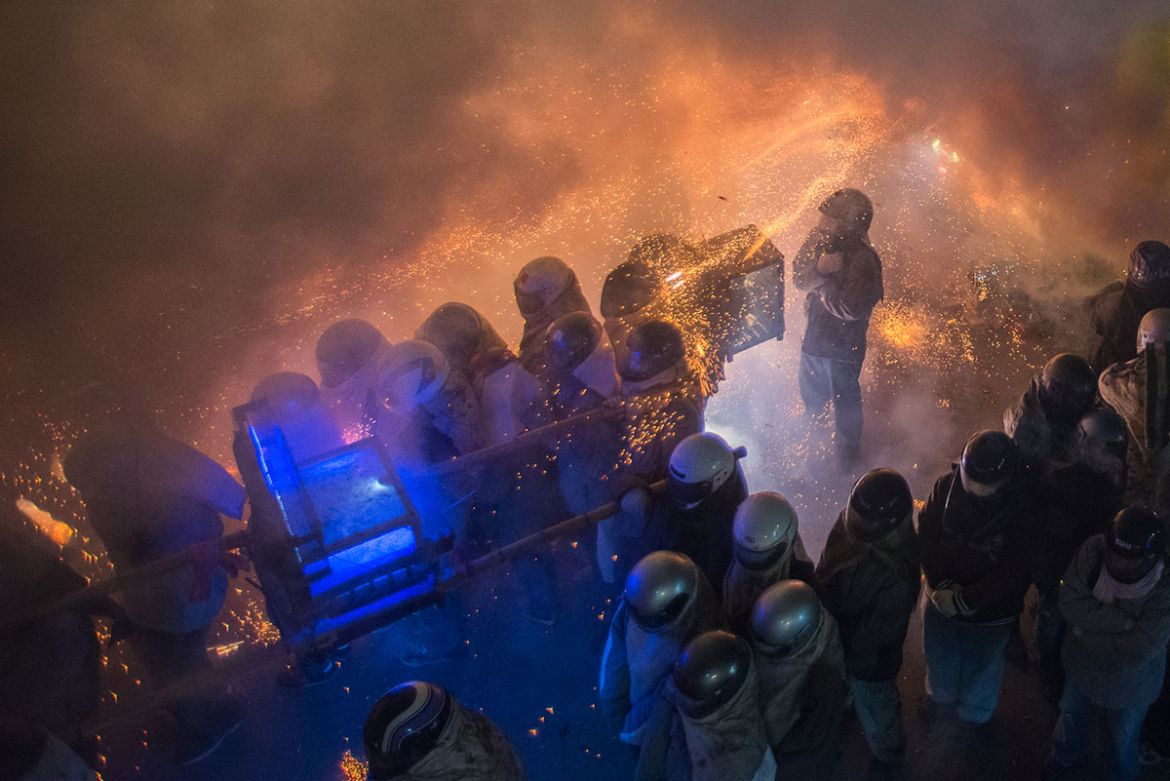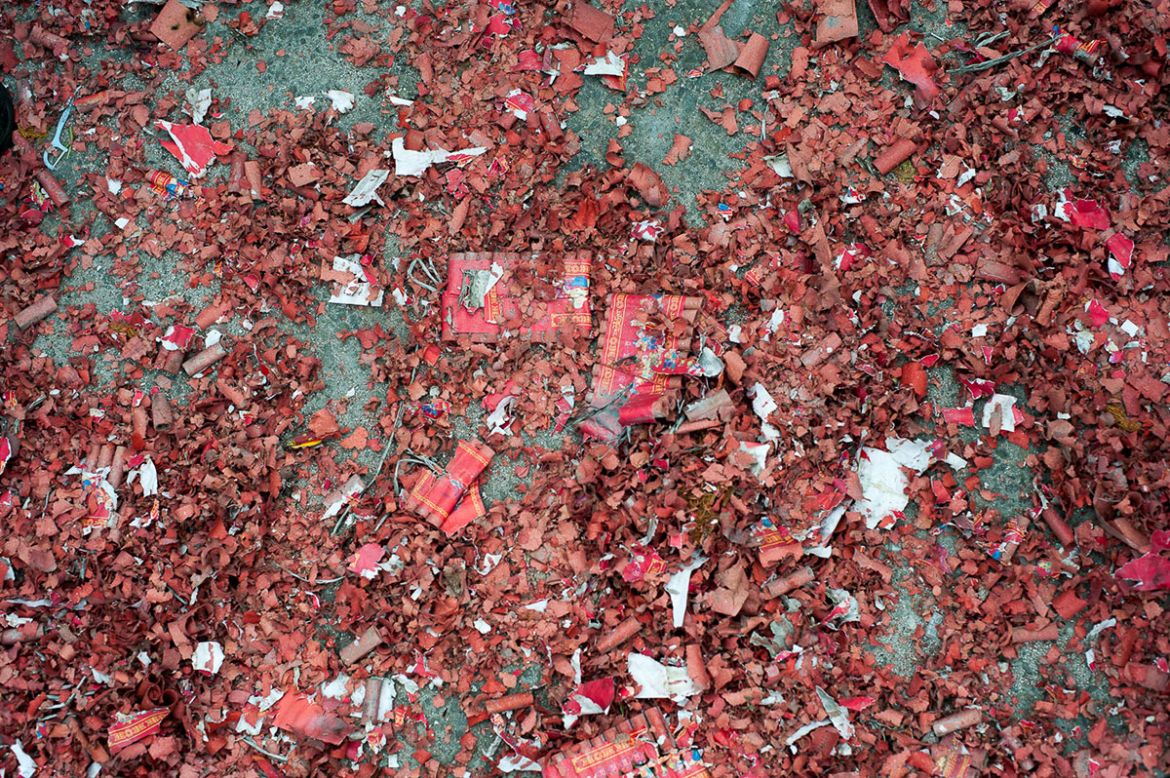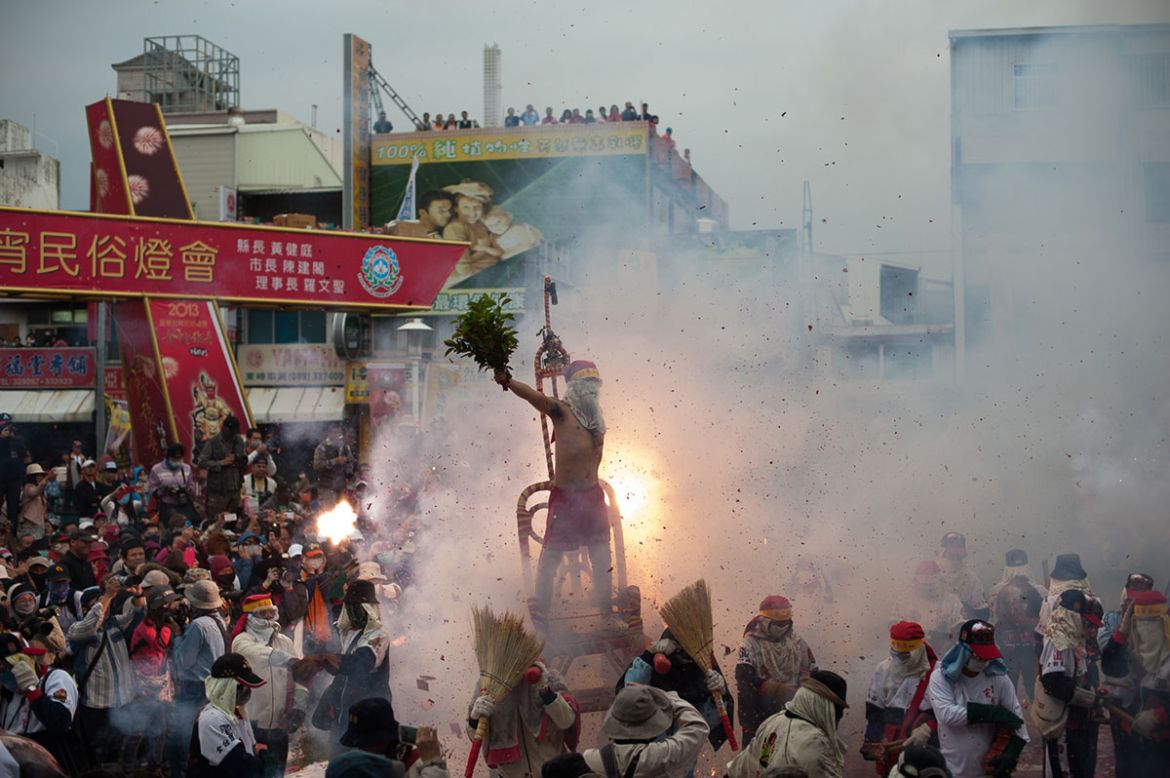In Pictures
An explosive start to the Chinese New Year in Taiwan
In this 19th-century festival, legend has it, cholera ravaged Yanshui until the god of war was summoned with fireworks.
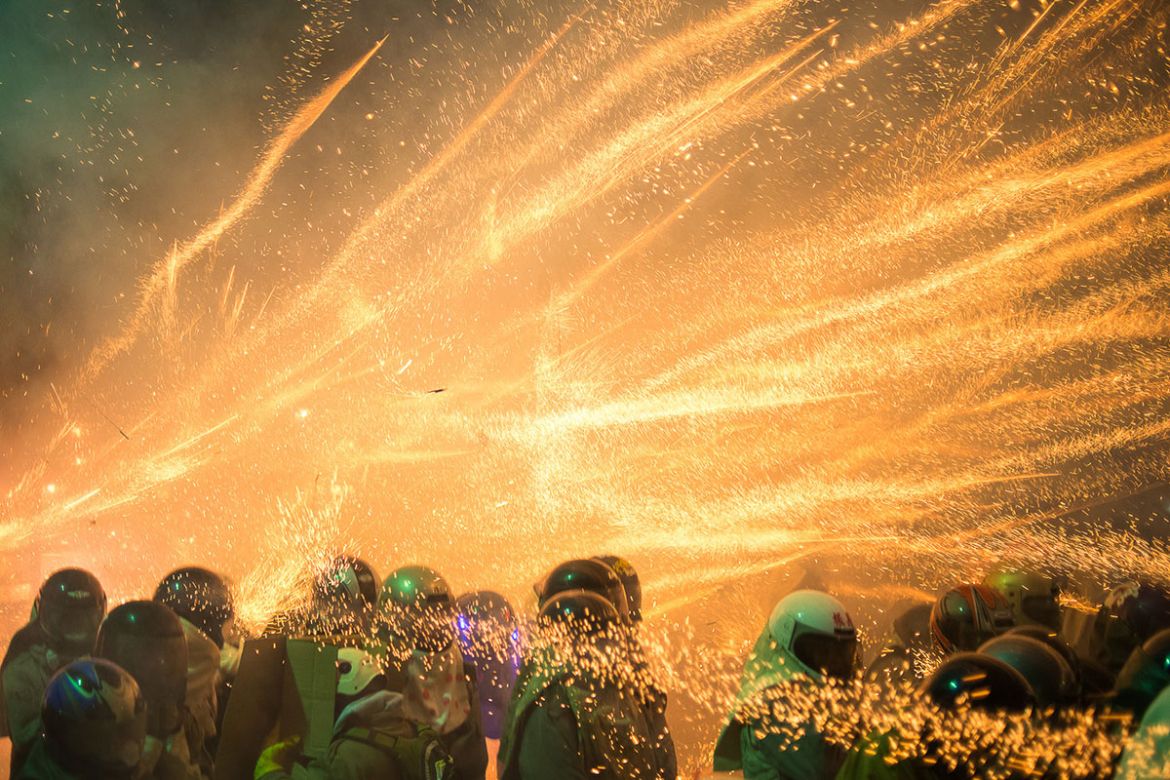
Yanshui, Taiwan – The Yanshui Beehive Fireworks Festival is unquestioningly one the world’s most dangerous celebrations. Essential attire includes motorcycle helmets, ear plugs and old, non-flammable clothes. Crowds gather around ‘beehives’: firework launching platforms that can fire can fire up to 600,000 rockets in two directions.
Legend has it that the festival originated during a cholera outbreak in the 19th century. According to Wu Zenhung, chief secretary of Da Tzung Temple, cholera ravaged Yanshui until a local shaman summoned Guan Gong, the god of war. Guan Gong agreed to appear on the condition that he was greeted with fireworks.
“The sulphur in the firecrackers killed the germs,” explains Wu, who grew up with the annual tradition. His earliest memory is preparing boxes of fireworks with his family as the community competed for Guan Gong’s favour with ever increasing arsenals at Chinese New Year.
“Commercial sponsorship has made the beehives bigger than ever,” says Wu. “But it’s not as dangerous as it was 30 or 40 years ago. No one used to wear helmets and, sometimes, bystanders got hit.”
The Bombing of Master Handan, which takes place simultaneously in Taitung, 250km southeast by road, involves brave men dressed in little more than red boxer shorts, a red bandana and a yellow scarf. As they are paraded on sedan chairs, masked men from local temples hurl “bombs” made of firecrackers at their bare flesh. This ritual is intended to please a local god, Handan, who cannot stand the cold. The firecrackers are intended to warm Master Handan, so that the people of Taitung will be blessed. It is also rumoured to be a gangster initiation rite.
The Yanshui Beehive Rocket Festival and the Bombing of Master Handan, took place on February 10 and 11.
